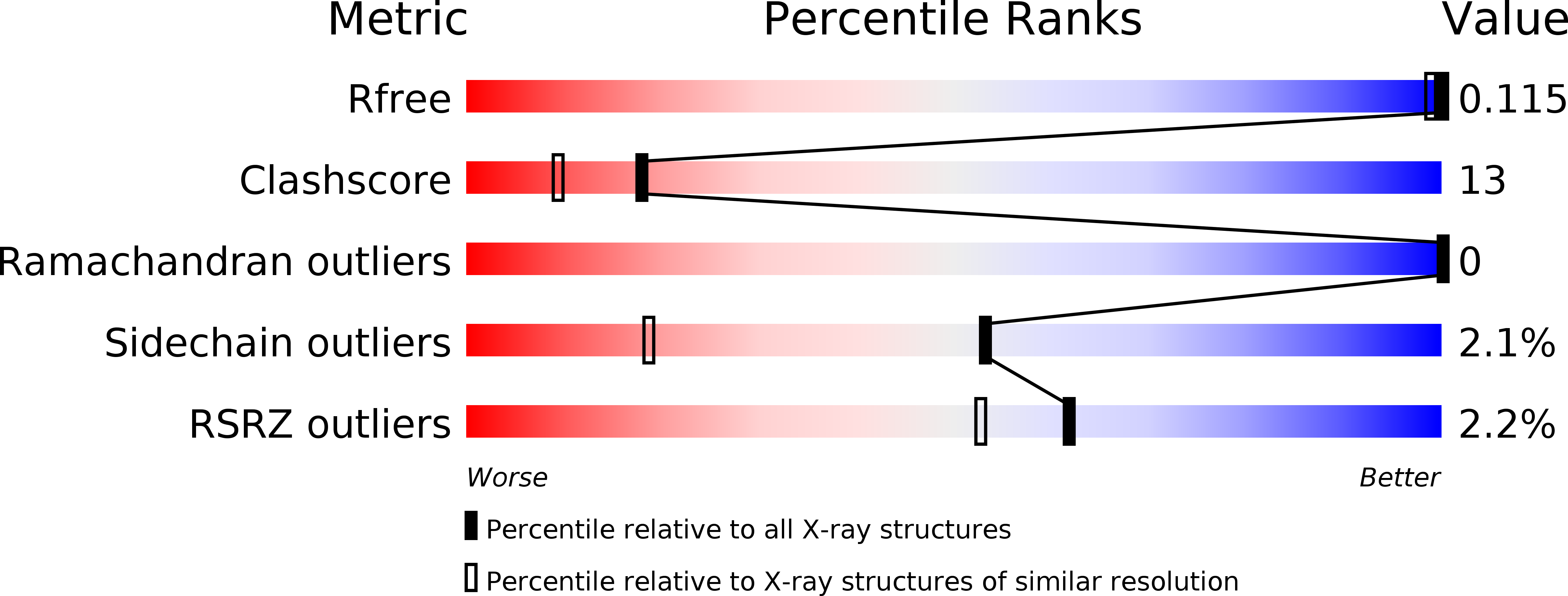
Deposition Date
2017-09-06
Release Date
2017-11-29
Last Version Date
2024-10-16
Entry Detail
PDB ID:
5OXC
Keywords:
Title:
Structure of Cerulean Fluorescent Protein at 1.02 Angstrom resolution
Biological Source:
Source Organism:
Aequorea victoria (Taxon ID: 6100)
Host Organism:
Method Details:
Experimental Method:
Resolution:
1.02 Å
R-Value Free:
0.11
R-Value Work:
0.09
R-Value Observed:
0.09
Space Group:
P 21 21 21


